Our favorite BioShock moments
A look back at the scariest, ugliest, and prettiest scenes from throughout the series.
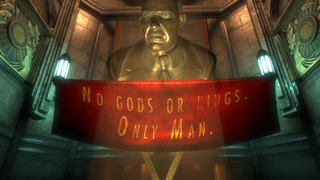
This article was originally published in 2016.
Opinions on the BioShock series are diverse—you can find arguments that they're all brilliant, that only some are brilliant, that some are brilliant but others are awful, or that they're all awful—which speaks somewhat to how memorable the games all are. There are systems and spectacles and stories we're still keen to talk about. So we've collected our favorite BioShock moments here, spanning the whole series. What are yours?
Spoilers ahead, of course.

Seeing Rapture for the first time
Game: BioShock
It’s astounding how many games start by explaining how to play rather than by crashing a plane into the ocean. BioShock’s hook is sharp and immediate: The first 10 minutes tells you where you are, how you got there, and why everything went wrong—“science would not be bound by petty morality”—in a compressed, riveting sequence. There’s panic as you struggle to the surface of the ocean, unease as you investigate the lighthouse, and awe when Rapture is revealed as a neon-lit metropolis with squid and whales out the window. And then terror, of course, as you witness a gruesome murder while trapped in a bathysphere. Every time I play a game that starts with a long, non-interactive cutscene (which I fidget through) or takes an hour or more to really get going, I think about what it should’ve learned from BioShock 1. Just have your protagonist wake up underwater and go from there.
—Tyler Wilde
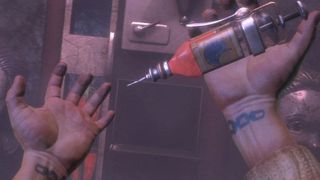
Injecting your first plasmid
Game: BioShock
It's always jarring when the character you’re playing suddenly does something stupid, but in this case that ‘no don’t inject that strange glowing potion’ response feeds into the horror of the moment. As you inject the plasmid into your wrist, your veins start glowing blue, your hands start spasming and your character cries out in pain. Cue the worst line in BioShock: “Steady now, your genetic code is being rewritten!” Moments later the agony causes you to fling yourself off a balcony.
This scene is indicative of a line of body horror in the first BioShock that faded in the sequels. In BioShock 2 you’re a tanky Big Daddy, in Infinite you’re a skyrail-riding detective cowboy superman. In the first game you’re a vulnerable explorer in a world where flesh, blood and genetic essence are currency.
—Tom Senior
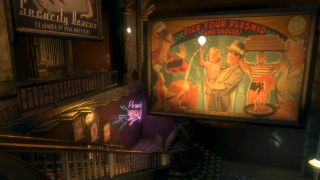
Hats off
Game: BioShock
I remember in the first BioShock how exciting it was to get a new plasmid—it opened up new possibilities and combinations in combat. I’d just found Telekinesis, and was eager to give it a try on an enemy. I was creeping carefully around—my entire first run of BioShock was done with extreme inching caution—when a splicer walked through a doorway ahead of me, holding a revolver in front of him. I decided to pull the gun out of his hand with my new power.
I aimed and activated my telekinesis. Instead of pulling the gun from his hand, however, it sucked the fedora off his head. It was a surprising moment, for both of us. He stopped walking and said “Huh?”, having been alerted to my presence by the sudden disappearance of his lid. I stopped too, because I was laughing: I never expected his hat would come off, or that’d he’d be coded to notice when his hat came off. It was just this wonderfully goofy little moment between me and this NPC. I beat him to death with a wrench but I’ll always remember him fondly.
—Christopher Livingston
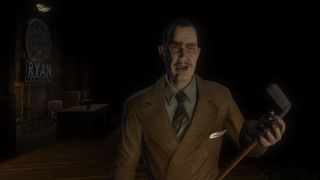
Meeting with Ryan
Game: BioShock
Several twists are revealed at once in BioShock: the nature of the plane crash that brought you to Rapture, that someone who has been helping you is not who he says he is, and that the character you’ve been playing is a puppet in the truest sense of the word. Most shocking, however, is your encounter with Andrew Ryan (in yet another twist, you’re not exactly strangers) who in many ways has been set up as the “boss” of BioShock. Unlike any other video game boss, however, you don’t meet him at the end of the game but somewhere around the the middle, and the “boss fight” is really him using you (and a golf club) to take his own life.
Especially compared to the by-the-numbers boss fight that takes place at the end of the game, our encounter with Ryan is chilling, shocking, and utterly horrifying. It’s a cutscene, I guess: you have no control and all you can do is watch. But the story allows the cutscene to feel completely fair—you have no choice but to obey, that’s the point—and the feeling is not of simply watching some action take place on the screen but of carrying out a brutally violent act against your will.
—Christopher Livingston
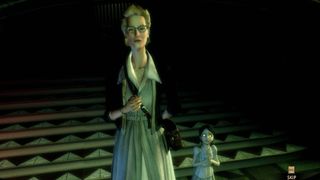
1958
Game: BioShock 2
I’ve got a huge soft spot for BioShock 2, as well as its DLC, Minerva’s Den, which is a really effective short story set in Rapture (I’d pay for a ton of episodes like that). Clearly it doesn’t have the advantage of showing you the setting for the first time, but it does successfully show you other sides of Rapture, and allow you to play a different role within it.
That starts with this very effective intro cinematic, which establishes your role as a Big Daddy within this narrative, as Ryan’s rival Sofia Lamb asks your character to put a gun to his head—under the control of the possession plasmid.
—Samuel Roberts
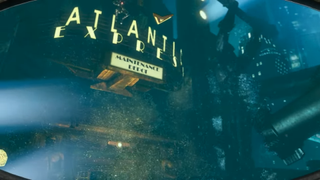
Wandering the ocean floor
Game: BioShock 2
The neon-bathed underwater cityscape which lies beyond Rapture’s dank corridors and cracked portholes marks more than just a physical divide in the first BioShock—it also offers a glimpse at how things were, and, crucially, how bad things have become. Part of the setting’s wonder stems from our first encounter—the plane crash, that first bathysphere plunge, Andrew Ryan’s haunting introduction—therefore returning to the scene of the crime in BioShock 2 was an interesting, if slightly uninspired, move from Irrational. That is, until we get to explore the other side of the glass.
“Look Delta,” says Eleanor Lamb moments after Siren Alley comes crashing down, and you’re thrust into the deep. “It is the world in which you strive. You… alone… among the dead.” Anchored by your hulking Big Daddy dive suit, you bound across the ocean floor as if recreating the moon landing. You’re channelled along a linear pathway, but gawping at the world around you is no less wonderful. Splicer corpses, suddenly submerged, float upwards; sharks circle and swoop above head height; and coral glows against the long shadows cast by the adjacent Dionysus Park. Just when you thought you’d seen it all from Rapture’s dark squalor, a short trip beyond its internal boundaries is breathtaking.
—Joe Donnelly

Through the eyes of a Little Sister
Game: BioShock 2
For me, the most intriguing story thread in the BioShock series is the one shared by Eleanor and Sophia Lamb, Brigid Tenenbaum, Subject Delta and the Little Sisters. It’s not without ambiguity and the odd plot hole—some of the particulars are taken on assumption, for example —however it culminates when the player gets the chance to see Rapture through the eyes of a Little Sister. It also pulls much of the first game’s ending in line with that of its sequel (assuming you achieved a certain conclusion in number one).
While filling the boots of a Little Sister, you learn that the stolen children live in a perpetual state of sedation and view the dangerous underwater world as a paradise filled with candles and rose gardens and glowing open fires. Splicers maintain their pre-catatonic state, and white silk sheets adorn the walls as you clamber around the tunnel system housed within the Sisters’ familiar wall-mounted port holes. At the behest of Eleanor Lamb, you occasionally see flashes of the world as it really is—in a style reminiscent of Silent Hill’s real world/other world dichotomy—which serves to outline the horrors of both Rapture and the Little Sisters programme itself. It’s a fascinating plotline which eventually sees you partner up with a formidable Big Sister, which is in itself very cool, and makes for some entertainment combat set pieces towards the game’s end.
—Joe Donnelly

Welcome to Columbia
Game: BioShock Infinite
Infinite’s intro is spectacular, ominously playing on the original BioShock’s lighthouse intro for reasons that become clear late into the story. I remember the first time I played it, and being breathless the first time Booker shoots through the clouds and you see the dream-like, strange sight of Columbia for the first time. But I love the beats leading up to that, too: the Lutteces rowing you towards the lighthouse, the warning you find within tied to a dead body and the sounds that play before you’re thrust through rainy clouds into this gorgeous dystopia. BioShock never slouches when it comes to intro sequences.
—Samuel Roberts
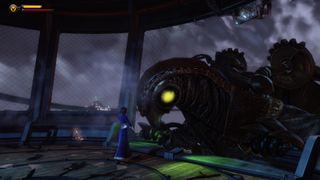
Controlling songbird
Game: BioShock Infinite
It’s fair to say BioShock Infinite’s firefights are a little relentless, particularly the prolonged fight with the ghost of Elizabeth’s ‘mother’, which went on for about twice as long as I’d have liked towards the end of the game. In the right moments, though, it’s an FPS that lets you solve problems using Booker’s powers, the environment and Elizabeth’s tears, and this to me was the best example of all this coming together.
Tricky as it is, the final fight allows you to skirt the whole environment on a skyrail and summon Elizabeth’s guardian, Songbird, to airstrike your many opponents, including a bunch of incoming airships. For me, BioShock 2’s combat had just the right combination of strategy, scale and challenge—Infinite could do with a little more of the first one, but it still offers greater spectacle than anything else in the series. This is a hell of a set piece to be a part of.
—Samuel Roberts

Sounds familiar
Game: BioShock Infinite
I can probably think of better uses of time portals to the future, but stealing music is such a part of our culture now that I suppose Columbia was just ahead of the curve. Albert Fink, composer and perfect representative of his last name, has been using time tears to listen to songs and pass them off as his own. I’m not sure of the legality of stealing music that hasn’t been written yet, but on the plus side as we wander Columbia we’re treated to a barbershop quartet crooning The Beach Boys “God Only Knows”, a callope rendition of Cyndi Lauper’s “Girls Just Want to Have Fun”, and a piano version of “Tainted Love.” It’s odd, yet dreamy, hearing familiar songs in an unfamiliar fashion, and provides a few minutes of pleasant stop-and-listen entertainment between the bouts of carnage.
—Christopher Livingston
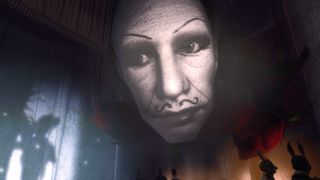
Rapture, before the fall
Game: BioShock Infinite: Burial At Sea Part 1
I recently finished Infinite’s story DLC again, so it’s very much fresh in the memory. It’s probably my favourite part of BioShock Infinite outside of the main game’s intro, and can almost be called a new BioShock game in its own right. Getting to wander around Rapture before the fall at the start of Part 1, combat-free, is really something. Every NPC conversation is worth listening to, as the citizens reference the impending civil war between Ryan and Atlas, and other familiar elements of BioShock lore.
You can see a Big Daddy outside, an arrangement of frozen-faced Little Sisters and a waiter using plasmids to bus drinks around a bar. It’s full of detail that convincingly shows the city in its prime. No-one is trustworthy down here. The sound designers cleverly use these white noise-like effects to make each of this opening district’s storefronts feel unsettling to explore. You know what will happen to all of this, and you get to enjoy it while it lasts.
Best of all, you get to meet Sander Cohen again, after a tense build-up—and it’s as bizarre and horrifying as you could hope it to be.
—Samuel Roberts
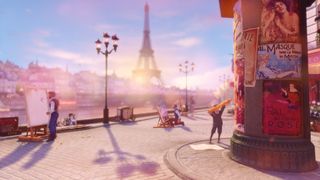
Paris
Game: BioShock Infinite: Burial At Sea Part 2
Elizabeth’s ludicrously dreamy Paris sojourn at the start of Part 2 goes from images of baguettes, the Eiffel Tower and singing birds to a desolate nightmare world in just a few minutes. I adore this intro and the sense of unease you feel at how cheerful it is relative to all the bad things that normally happen in a BioShock game. More than that, though, it just gives Irrational’s brilliant art team a chance to show off how talented they are at bringing any location to life—not just underwater/flying sci-fi cities. And the choice of music is wonderful. It’s an otherworldly and nostalgic bit of world building that makes me wish Irrational still existed to create places that feel so alive.
Also, I like that it’s essentially the game version of ‘Foux Du FaFa’ by The Flight of the Conchords.
—Samuel Roberts
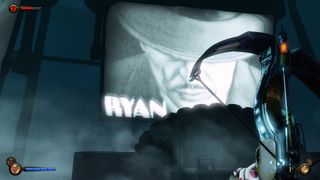
Ryan attacks
Game: BioShock Infinite: Burial At Sea Part 2
Probably the best part of Burial At Sea as a game, and a standout story moment, too. Burial At Sea is a successful attempt for Infinite to transfer into more of a stealth shooter or immersive sim-type game, which in some ways brought Irrational full circle as a studio. In this instance, after teasing some form of encounter with Andrew Ryan for the DLC’s past three or four hours, Rapture’s creator appears motionless on a giant black-and-white screen in Suchong’s lab and tells Elizabeth he’s sending his men to deal with her.
You’re tasked with setting up the necessary traps to fend them off before they arrive, since there’s no way you can take them on like Booker would. It can take a few attempts, but memorise the movement patterns of the enemies on their entrance, as well as the location of all the available EVE, and you can put a really slick set of attacks and traps together—it arguably demands more strategy and planning than any other section of Infinite. All the while, the legendary antagonist of a nine year-old classic goads you, voiced brilliantly once more by Armin Shimerman.
—Samuel Roberts

The ace in the hole
Game: BioShock Infinite: Burial At Sea Part 2
Whenever I discuss the ending of Burial At Sea Part 2 with friends, the criticism they tend to bring up is that it fills in gaps that didn’t need to be filled within BioShock’s lore. Elizabeth’s fateful encounter with Atlas—who, when he loses his temper, slips into his Fontaine voice, a touch that I love—is high-end, exciting fan service. The original BioShock’s story of how Jack came to Rapture is fine as is. You don’t need to add the idea of Elizabeth being part of the process that brings him to Ryan’s underwater city. But I don’t necessarily think Burial At Sea needs to be taken as canon, and that it can just be enjoyed as a fun ‘what if?’ scenario.
Ken Levine has a long and extensive love of superhero comic books, based on interviews where he’s talking about his favourite books or creators, or indeed Freedom Force, itself an homage to Kirby-era Marvel. Comics have an extensive history of exploring ‘what if?’ scenarios that are out of continuity—hell, Marvel itself has ran various books called ‘What if…?’ since the ‘70s. I think Burial At Sea should be taken in the spirit of that, and enjoyed for what it is: a fascinating clash of two rich fictional worlds.
—Samuel Roberts

Tyler grew up in Silicon Valley during the '80s and '90s, playing games like Zork and Arkanoid on early PCs. He was later captivated by Myst, SimCity, Civilization, Command & Conquer, all the shooters they call "boomer shooters" now, and PS1 classic Bushido Blade (that's right: he had Bleem!). Tyler joined PC Gamer in 2011, and today he's focused on the site's news coverage. His hobbies include amateur boxing and adding to his 1,200-plus hours in Rocket League.
Most Popular

